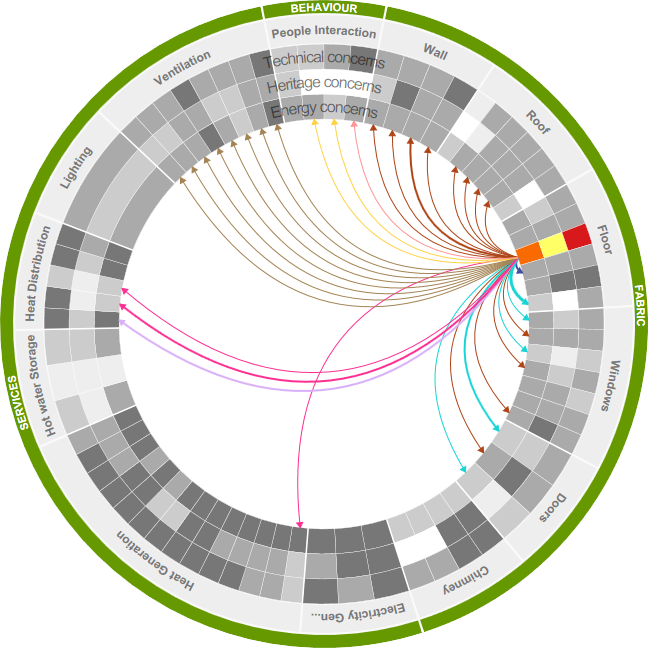Concern & action: User understanding
Lack of precise understanding by the user of the technologies and the controls installed in their homes. This can lead to an inefficient operation of the systems.
Suggested actions
Before Implementation
If possible, check occupants existing knowledge about their home and operation and identify any information gaps or misconceptions. Identify and compile clear and concise information to pass to the occupant about the implications of the measures installed (e.g. danger of compromising effectiveness of insulation installed and to allow moisture penetration by fixings on the wall; need to interact with various items of plant to adjust settings or carry out maintenance).
During implementation
Provide a variety of information (in a range of media) that meets all occupants' needs. Consider that occupants can include users of different ages and abilities (children, elderly people, non technical, non English speakers, people with additional needs, etc.). Consider provision of information at different stages.
After implementation
Carry out repeat or follow on visits to ensure understanding is embedded. Provide recourse to a help and advice service to provide guidance with maintenance and efficient operation of building on an on-going basis
RELATED MEASURES
 SERVICES (33)
SERVICES (33)
Photovoltaics
Hydropower generation
Heating system Refurbishment
High efficiency gas-fired condensing boilers
Air source heat pumps
Ground/Water source heat pumps
Biomass boilers
Biomass stove with back boiler
Fan-assisted replacement storage heaters
Flue gas heat recovery devices
Solar water heating
Waste water heat recovery devices for showers
Communal heat generating system
Micro combined heat and power
High efficiency replacement warm-air units
Cylinder thermostats
Hot water cylinder insulation
New cylinder
Heating controls (for wet and warm air systems)
Heating Distribution Refurbishment
Pipe insulation
Wet Under-floor heating
Communal Heat Distribution System and controls
Lighting system upgrade
Background ventilators and intermittent extract fans
Passive stack ventilation
Continuous mechanical extract ventilation
Continuous mechanical supply and extract ventilation with heat recovery
Passive stack ventilation with heat recovery
Passive stack ventilation with demand control ventilation
Continuous mechanical extract ventilation with demand control ventilation
Continuous mechanical supply and extract ventilation with heat recovery and with demand control ventilation
RELATED REFERENCES (10)
Warmer Bath: A guide to improving the energy efficiency of traditional homes in the city of Bath (2011)
Bath Preservation Trust & Centre for Sustainable Energy
Here comes the sun: a field trial of solar water heating systems (2011)
Energy Saving Trust
Future Fit: Installation Phase in depth findings (2011)
EST/Affinity Sutton
The usability of control interfaces in low-carbon housing, Architectural Science Review, 56:1, 70-82 ( 2013)
Stevenson F, Carmona-Andreu I and Hancock M
Ranking of interventions to reduce dwelling overheating during heat waves (2012)
Porritt, S.M.; Cropper, P.C.; Shao, L. and Goodier, C.I.
Renewable Heritage: A guide to microgeneration in traditional and historic homes (2009)
Changeworks
Micro CHP Accelerator - final report (CTC788) (2011)
Guy,R. and Sykes,B.
Findings from a Post Occupancy Evaluation of adaptive restoration and performance enhancement of a 19th century (2011)
Sharpe, T. and Shearer, D.
Getting Warmer: a field trial of heat pumps (2010)
Energy Saving Trust
Energy-led retrofitting of solid wall dwellings: technical and user perspectives on airtightness. Structural Survey, 30 (3), pp. 267 - 279 (2012)
Banfill P, Simpson S, Haines V, Mallaband B

